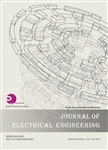版权所有:内蒙古大学图书馆 技术提供:维普资讯• 智图
内蒙古自治区呼和浩特市赛罕区大学西街235号 邮编: 010021

作者机构:Department of Computing and Information Systems Faculty of Applied Sciences Wayamba University of Sri Lanka Kuliyapitiya60200 Sri Lanka Department of Electrical and Computer Engineering Michigan State University East Lansing M148824-1226 USA
出 版 物:《Journal of Electrical Engineering》 (电气工程(英文版))
年 卷 期:2014年第2卷第5期
页 面:213-220页
学科分类:080802[工学-电力系统及其自动化] 0808[工学-电气工程] 08[工学]
主 题:Finite element method legacy software performance evaluation re-engineering.
摘 要:The FORTRAN programming language was used in early days of writing finite element field computation to write programs Much of those codes were developed in an ad hoc way. Today, modem software developers face problems in understanding, modifying and utilizing those codes. As modem software engineers are very concerned with object oriented design, if those codes are converted into an object oriented language, they could be redesigned and deployed in an object oriented system. Those legacy codes often need to be converted not only into an object oriented programming language such as Java but also into functional oriented languages such as C. Conversion of those legacy codes into modem languages gives many advantages. The purpose of this paper is to compare the performances of such converted legacy finite element codes originally written in FORTRAN, the relevant converted C program and Java program. Sample finite element programs written in FORTRAN are converted for purposes of comparison into modem languages such as C and Java. Performances are compared based on the execution time. In addition to that, the memory sizes of the execution file of FORTRAN and C programs are also compared. Java being interpretive there is no execution file to compare.